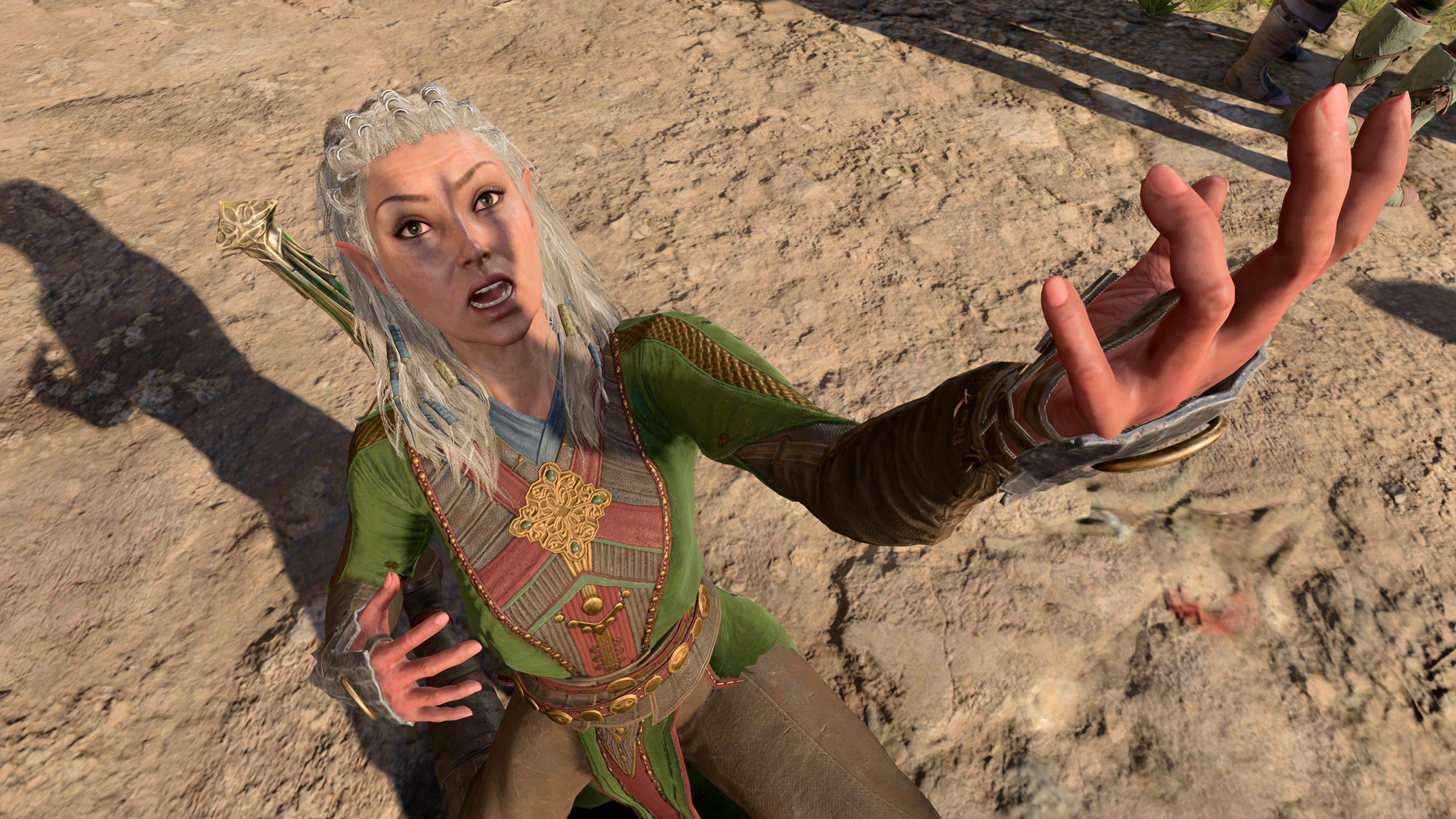In most 4X games, the achievements of your past civilizations only live on in animated discussions with friends over drinks later. Your Gandhi from a previous Civilization 6 campaign isn’t going to come through a portal to save the day in a later one, with the scars of a nuclear war against Alexander the Great still marking his slender frame. That would be rad though. And it’s a big part of why I’ve been coming back to Age of Wonders 4, as the rulers I led to victory actually do ascend to a mighty pantheon and become a recurring cast for future adventures. That’s only the icing on top of a well-crafted fantasy strategy game with varied tactical battles and a near-perfect pace.
Rather than telling the story of many alternate earths or distant galaxies, starting over on a fresh map is baked into the story of Age of Wonders 4, where powerful Sorcerer Kings teleport between many different realms in their quest for power and glory. And the way this encouraged me to think about a given run as a more digestible, if not exactly bite-sized, six- to twelve-hour sprint helps to build the sense of lasting investment in the progress of my pantheon. It’s a great way to do account-level progression that doesn’t feel forced, artificial, or over-monetized. At least in the review build, I didn’t spot any sneaky microtransactions. The tendency lately to add them right after launch has put just about everyone on notice for me, but so far so good.
What We Said About Age of Wonders 3
The quest for the ultimate fantasy strategy game will continue for a while longer, as Age of Wonders III only partially fits the bill. Still, it’s a fairly successful return for a game series and style that seemed undeservedly buried. I have no doubt that the strength of the tactical combat will help find a strong niche, but for me, that just makes the relative weakness of the strategic side of gameplay all the more disappointing. – Rowan Kaiser, April 2, 2014
Score: 7.1
Read the full Age of Wonders 3 review.
Along the way, you can unlock neat new stuff from ruler cosmetics to functional combat items, to challenge maps like a frozen wonderland ruled over by a Chronicles of Narnia-esque ice queen that I really liked. And in addition to being very respectful of your time, these themed, story-based realms feel significantly different from just dropping into a standard 4X map with conquest, development, and research-based victory conditions – which you can also do, with tons of interesting customization options. Often, the victory condition in a story realm is to complete a series of quests culminating in a showdown with a memorable antagonist. I had such a good time with these, I almost found it hard to go back to the more traditional style of play.
The other thing that had me planning two or three campaigns every time I started a new one is the in-depth, freeform empire creation tools. It’s probably the most customization of this kind I’ve seen in a purely fantasy game, and I was especially excited by how it let me play against stereotypes. You can make noble orcs in shining armor who march dutifully to battle with holy words on their lips, or bloodthirsty cannibal elves who live for destruction.
Want to make a race of feline necromancers who ride around on giant spiders? Go for it.
The visual aspect is mostly just cosmetic – it comes with some suggested racial traits that fit the classic fantasy version of each race, but you can of course change those out. Lanky dwarves who live above ground and love magic? Sure. Feline necromancers who ride around on giant spiders? Go for it. Your culture pick – Barbarian, Feudal, Mystic, and so on – defines most of your starting roster and how your empire’s economy works. And there are only six of those. So if I were being harsh, I could say there are only really six playable civs with a lot of little bells and whistles to swap out. But the magical progression system that carries you through the ages does a lot to alleviate that feeling.
Rather than technological ages, Age of Wonders 4 has five tiers of mystical tomes unlocked through research, each providing increasingly powerful units, spells, and campaign mechanics. They’re divided into six alignments – Astral, Materium, Chaos, Order, Nature, and Shadow – with two tomes per alignment per tier that might be very thematically different. Within Chaos, for instance, you can focus on fire magic or revelrous, aggressive infantry like berserkers. Doubling down on one affinity or mixing and matching are both very viable, creating a practically absurd number of combinations for what your race might become by endgame. I especially love the racial transformations at certain tiers, which might turn your people into plant hybrids who can move much easier through forests, or frostlings who can build farms on snow. The cold never bothered them anyway.
This amount of customization doesn’t always come without some hitches, though. Remember that cool ice queen map I mentioned? I made a badass race of wolf-riding frost vikings to tackle it, but I found that its provinces were often affected by a modifier called Arctic Blizzards that isn’t visible in any way on the map, and it blocks your units from healing even if they’re parked in your capital city. You have to actually mouse over a unit to see if they have the modifier, meaning I was constantly marching my armies around in the snow to find a safe province where they wouldn’t freeze to death.
That’s a pretty big oversight for such a punishing mechanic. And even completing their final transformation into beings of pure ice didn’t remove the penalty! I found more strange edge cases like this the more tweaking I did with my campaign setups. Sure, you can play on a Dune-like desert world where everyone’s capital starts underground, then infest it with Cthulhu monsters, but you might find the mechanics haven’t really been fine-tuned for all the possible, weird combinations yet.
The tactical battles, which take place on their own maps, aren’t quite as exemplary as the strategic core of Age of Wonders 4, but they are just as fast-paced and can offer some seriously satisfying challenges. The bestiary is huge, with everything from ogres to astral monstrosities to demons spawning as neutral or hostile NPC factions, in addition to the forces of your rival civilizations. The one place it feels like kind of a letdown is when you’re assaulting a major enemy city. It doesn’t really feel like an epic struggle through the streets of a vast metropolis. At most, it’s a scuffle over the outer defenses protecting what looks more like a village. But I did love seeing some of the bigger engagements that are possible with multiple armies on each side.
I definitely have to applaud the graphics and UI as well. The balance Age of Wonders 4 strikes between realistic and stylized is just about perfect for me. Every unit, from a proud elven archer to a snarling wolf, is readable at a distance and projects a strong personality. The maps all look great, whether you’re starting in a serene meadow or on some alien-looking astral plane. There’s quite a bit of customization for your leader and units as well. And all the interface panes are well-organized, nice to look at, and easy to navigate. Nested tooltips make it easy to get just as much information as you want. And sometimes figure out what the hell the narrator is talking about when they bring up some lore concept from other games in the series you may not have played.







